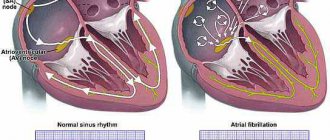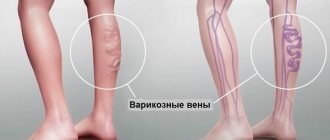Causes of Kawasaki syndrome in children
The walls of blood vessels consist of specific endothelial cells, and for unknown reasons, the child’s immune system may begin to produce antibodies to them. The consequences of such an inadequate immune response will be:
- inflammation of the medial lining of the arteries and subsequent death of its cells;
- destruction of membranes (internal and external), which provokes the formation of aneurysms (pathological dilation of the walls of blood vessels);
- the formation of fibrous changes in the walls of blood vessels;
- maximum critical narrowing of the lumen of the arteries.
The true causes of Kawasaki syndrome in children have not yet been clarified. However, doctors have two assumptions. The first relates to the predisposition to pathology in representatives of the Asian race. In the second case, we are talking about the imperfection of the immune system, a decrease in its functionality.
Symptoms
• Diarrhea.
With Kawasaki syndrome, all organs can be affected, so in addition to the above points, joint pain, diarrhea, vomiting, headache, painful urination or chest pain may occur.
By far the most dangerous complication is inflammation of the blood vessels of the heart. If there is a deficiency in the supply of oxygen to the myocardium, a heart attack may develop, the typical symptoms of which are chest pain with radiation to the arm, chest tightness and shortness of breath. Therefore, intensive monitoring of cardiac condition is always necessary to detect serious complications in a timely manner.
A few days later a rash appears on the body. It can develop anywhere and does not have a specific pattern, it can be in the form of red spots or blisters. A few days later she disappears without a trace. Due to dilated capillaries, pink or burgundy spots appear on the body.
Lips become red, dry and cracked. When examining the tongue, you will notice that it has increased in size, turned red, its papillae are also enlarged, which in appearance resembles a ripe strawberry.
The lymph nodes become swollen, especially noticeable in the neck area.
Symptoms
The disease in question always begins acutely:
- body temperature rises, often to critical levels;
- cervical lymph nodes enlarge;
- I am worried about severe abdominal pain, nausea and frequent vomiting after eating.
The child categorically refuses to eat, cries constantly, and has trouble sleeping. In the first month, the symptoms of Kawasaki disease are aggravated by skin manifestations - rashes affect the lower and upper extremities and torso. Blisters quickly form and mature, then burst and heal, and in their place a red, dense surface forms - it is painful and causes a lot of inconvenience.
Complementing the clinical picture:
- redness of the mucous membrane of the eyes;
- severe dryness of the mouth and lips;
- crimson tongue color;
- conjunctivitis;
- swelling of the feet and hardening of their skin.
As the disease progresses, the child experiences severe shortness of breath after light physical exertion, fatigue and general weakness with increased drowsiness.
Diagnostics
To make a diagnosis of Kawasaki syndrome, fever must be present for more than 5 days and any 4 of the following criteria must be present:
- Erythema of the palms or soles;
- Dense swelling of the hands or feet on the 3-5th day of illness;
- Peeling on the fingertips in the 2-3rd week of the disease;
- Bilateral conjunctival injection;
- Changes on the lips or in the oral cavity: “strawberry” tongue, erythema or cracks on the lips, infection of the oral mucosa and pharynx;
- Any of the listed changes, localized on the extremities;
- Polymorphic exanthema on the body without blisters or crusts;
- Acute non-purulent cervical lymphadenopathy (diameter of one lymph node >1.5 cm).
If 2-3 of the 4 mandatory signs of the disease are absent, a diagnosis of an incomplete clinical picture of the disease is made.
General principles of treatment of the disease
Kawasaki disease is dangerous only if there is no competent therapy or the disease was diagnosed late. Treatment of Kawasaki syndrome in children is carried out with the following drugs:
- immunoglobulin - the main purpose, allows you to normalize and stabilize the functioning of the immune system;
- anticoagulants - administered to prevent the formation of blood clots;
- aspirin (acetylsalicylic acid) - reduces the intensity of inflammation, thins the blood and prevents the formation of blood clots.
Clinical guidelines for Kawasaki disease:
- the patient must be ensured peace, the room must be constantly ventilated;
- it is necessary to monitor body temperature and, if it rises sharply, give the child appropriate medications;
- food should be low-calorie, but nutritious - heavy foods in the form of fried, smoked, salted and pickled dishes are excluded.
Doctors give favorable prognoses for the disease; only in 0.8% of cases does it end in death. The most common complications in the absence of adequate treatment are myocardial infarction, arterial thrombosis, and severe heart failure.
More information about Kawasaki disease, its course and treatment features can be found on the pages of our website Dobrobut.com.
general information
Children make up 1–1.7% of the total number of people sick with coronavirus infection . In 90%, the disease is asymptomatic, with minor or moderate symptoms. The rest develop various complications and concomitant conditions, including hyperinflammatory reactions. The number of children with KS is small, so far about 600 cases have been described, the majority in the United States of America and European countries. There is information about people getting sick in Kazakhstan.
What is a hemorrhagic rash?
When the capillaries are damaged, some of the red blood cells come out of the vessel, which leads to the appearance of a rash with red spots - this is a hemorrhagic rash.
Initially, the rash is painless, but if you ignore the rash, it may become painful. When you press on the rash, its color does not change in any way, and the rash does not become smaller. This is the hallmark of hemorrhagic rashes.
Depending on the lesion that caused the rash, the types of rashes can be different - small dots, stripes or spots, the color of which can also be varied - blue, red, purple. The size of the spots may vary. In medical practice, medium-sized spots are usually called liver purpura, and small spots are called petechiae.
The most common area of localization of the rash is the lower extremities. If a hemorrhagic type rash develops, you should immediately consult a doctor, as this is a direct indication for hospitalization, even in the absence of other symptoms.
Features of hemorrhagic rash in children
A hemorrhagic rash in children usually accompanies hemorrhagic vasculitis, hemophilia, meningococcemia, and thrombocytopenic purpura. But hemorrhagic vasculitis is the most common disease, the manifestation of which is a rash.
As already mentioned, the most common manifestation of the rash occurs on the front surfaces of the legs. However, it can also be localized on the torso, buttocks, and thighs. The rash is located symmetrically, does not disappear when pressed and does not change its color. The disease usually affects children under six years of age.
In addition to hemorrhagic rashes, other types of rashes also occur in children. In the article on the website you can see a photo of a rash on a child’s body with explanations.
Possible complications
The disease usually has a very good prognosis. Most sick children recover completely.
Adverse consequences of the disease occur only in children who are too weak or with severe immunodeficiencies.
The most unfavorable consequences of the disease include: the development of aneurysms of large blood vessels, myocardial infarction, and the appearance of various heart rhythm disturbances.
Typically, these adverse effects are recorded several years after the illness. To eliminate them, you need to consult a cardiologist and prescribe complex treatment, which in some cases is lifelong.
Complications do not occur often; only 20% of sick children are susceptible to them. They are mainly associated with cardiac activity, although it is extremely rare for the patient to have a heart attack or sudden death.
Some of the most common complications include:
- Pathological dilatation of the coronary arteries.
- Aneurysm.
- Pericarditis.
- Myocarditis.
Less common non-heart effects:
- Inflammation of the tissues around the brain.
- Inflammation of joint tissues.
- Inflammation of the gallbladder tissue.
- Inflammatory process in the inner part of the eyes.
How does the infection progress?
Pathology has four forms of occurrence:
- Flu-like syndrome. Another name is Flu-Like. This pathology has the mildest form. Characteristic symptoms are fever, muscle pain, discomfort in the bones and general malaise. Signs of the disease are observed within three days. Next comes recovery. Influenza-like syndrome rarely causes complications, but only with qualified therapy;
- Intestinal infection. Children under two years of age most often suffer from this form of pathology. With such a disease, it is not necessary that other children will become infected from the child. In a group, this case may be exclusive and no one else may suffer from it. Characteristic symptoms are high fever, discomfort in the bones and general weakness of the body. In the first days of infection, other signs are observed - intestinal upset, nausea accompanied by vomiting. For this reason, the disease is often confused with poisoning. The period of exacerbation is 2-3 days for children of primary school age and a week for newborns. This disease can cause milk intolerance during the first time after recovery. This makes it necessary to give the child medical lactose before breastfeeding or to refuse it;
- Boston Pathology. The disease manifests itself in the same way as rubella, which makes it difficult to diagnose. A child, like an adult infected with the Coxsackie virus, in this case becomes covered with formations of a red hue. Symptoms: high fever, rashes on the epidermis in the form of blisters. The treatment period is 3-5 days. After this, recovery begins. With this form, relapse rarely occurs, and complications are most often not observed;
- Pleurodynia. Another name is Bronholm's disease. Symptoms: high fever, severe pain in the back, abdomen, muscles and chest. Spasms occur at regular intervals – once every 60 minutes. The duration of the attack is from 1 to 20 minutes. They cause spasms in the pleura and peritoneum, which cause pain during friction.
With any form of pathology, the patient needs urgent medical care.
Coxsackie viruses are divided into two large groups
There are two groups of pathology:
- Type A virus: Infection with the Coxsackie virus causes damage to the throat and may cause meningitis.
- Virus type B. Affects the brain, muscles and heart, causing irreversible changes in these internal organs.
Course options: mild, moderate and severe
Pathology has varying degrees of progression. The severity of the disease depends on how much the mucous membranes and internal organs are damaged. The degree is also affected by damage to the body by toxins.
The mild form of the pathology is characterized by a rapid course. Recovery occurs within a few days. In this case, the virus does not affect the patient’s internal organs and brain.
With moderate severity, therapy takes a little more than a week. The pathology has pronounced symptoms. The virus can affect internal organs, but with qualified treatment the problem can be quickly resolved.
The severe form of the disease is characterized by pronounced symptoms and a long course. This causes damage to the brain and internal organs.
Experts also identify the following variants of the pathology:
- smooth – recovery occurs quickly and the disease does not recur;
- wavy - the pathology either fades or flares up with renewed vigor;
- recurrent – after recovery, the disease develops again;
- with complications – the disease is difficult to treat and causes complications.
Forms of the disease
There are two forms of pathology:
- Isolated. The disease occurs in one syndrome.
- Combined. In this case, the Coxsackie virus affects several organs and systems at once.






